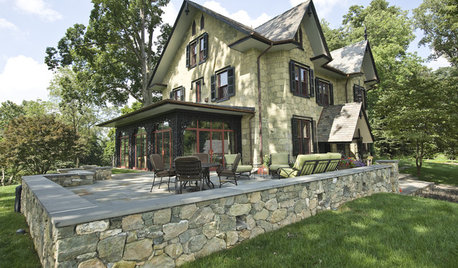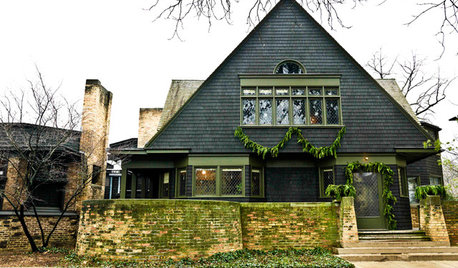Does anyone have experience with a permanent leek bed?
veggieluv
18 years ago
Related Stories

DECORATING GUIDESThe Cure for Houzz Envy: Guest Room Touches Anyone Can Do
Make overnight guests feel comfy and cozy with small, inexpensive niceties
Full Story
INSIDE HOUZZHow Much Does a Remodel Cost, and How Long Does It Take?
The 2016 Houzz & Home survey asked 120,000 Houzzers about their renovation projects. Here’s what they said
Full Story
LANDSCAPE DESIGNGarden Walls: Mortared Stone Adds Structure, Style and Permanence
Learn the pros and cons of using wet-laid stone walls in your landscape
Full Story
MOST POPULARWhen Does a House Become a Home?
Getting settled can take more than arranging all your stuff. Discover how to make a real connection with where you live
Full Story
DECORATING GUIDES7 Bedroom Styling Tricks Anyone Can Do
Short on time or money? You can spruce up your bedroom quickly and easily with these tips
Full Story
COMMUNITYCommunity Building Just About Anyone Can Do
Strengthen neighborhoods and pride of place by setting up more public spaces — even small, temporary ones can make a big difference
Full Story
HOME OFFICESThe Cure for Houzz Envy: Home Office Touches Anyone Can Do
Borrow these modest design moves to make your workspace more inviting, organized and personal
Full Story
KITCHEN DESIGNThe Cure for Houzz Envy: Kitchen Touches Anyone Can Do
Take your kitchen up a notch even if it will never reach top-of-the-line, with these cheap and easy decorating ideas
Full Story
LIFEThe Good House: An Experience to Remember
A home that enriches us is more than something we own. It invites meaningful experiences and connections
Full Story
MOST POPULARExperience the Holidays at Frank Lloyd Wright's Home and Studio
Handmade decorations, greenery and gifts show how the famed architect and his family celebrated Christmas in their Oak Park home
Full StoryMore Discussions






ceresone
veggieluvOriginal Author
Related Professionals
Holly Springs Landscape Architects & Landscape Designers · Jennings Landscape Architects & Landscape Designers · Norwood Landscape Contractors · Tempe Landscape Contractors · Cornelius Landscape Contractors · Cudahy Landscape Contractors · Estelle Landscape Contractors · Lynwood Landscape Contractors · Pompton Lakes Landscape Contractors · Selden Landscape Contractors · Antioch Landscape Contractors · De Luz General Contractors · Los Lunas General Contractors · Montclair General Contractors · North Lauderdale General Contractorspaquebot
veggieluvOriginal Author
paquebot
veggieluvOriginal Author
coho
veggieluvOriginal Author
coho
veggieluvOriginal Author
coho
veggieluvOriginal Author
lil_rhody
paquebot
kentuckyheirloomer
blueberrier1
ralleia
kcb703
jolj
yukkuri_kame
yukkuri_kame
Campanula UK Z8
mariannette